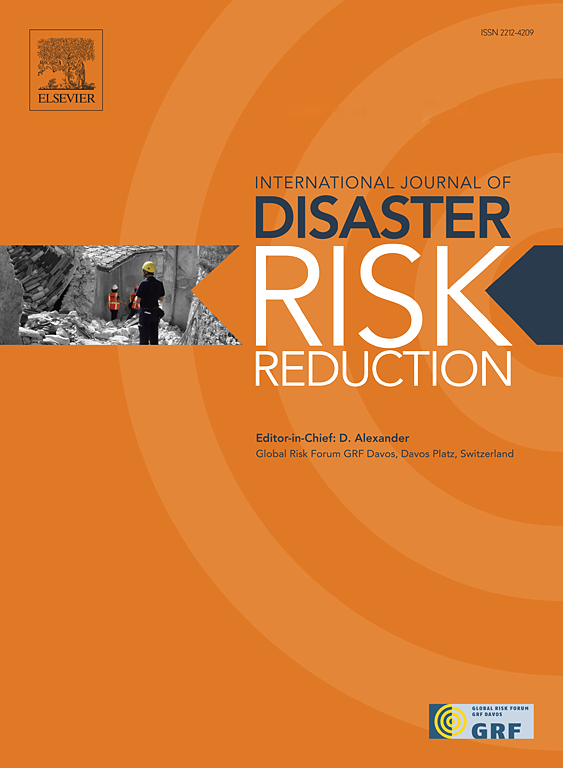大型语言模型在灾害管理中的应用:跨学科综述
IF 4.5
1区 地球科学
Q1 GEOSCIENCES, MULTIDISCIPLINARY
International journal of disaster risk reduction
Pub Date : 2025-06-26
DOI:10.1016/j.ijdrr.2025.105642
引用次数: 0
摘要
灾害日益挑战城市的复原力,需要先进的计算方法来进行有效的信息管理和响应协调。这篇跨学科综述系统地评估了大型语言模型(LLM)在灾害管理中的应用,分析了人工智能驱动的灾害管理的更广泛领域内70项以LLM为重点的研究。我们的分析建立了一个跨越检测、跟踪、分析和行动的基于阶段的框架,并揭示了当前灾害管理解决方案中的三个关键差距:在灾害响应之外,包括准备、恢复和缓解阶段的进展有限;不同利益相关者群体和可用资源之间的整合不足;以及将态势感知数据转化为可操作见解的不足。利用跨模态语义推理、知识图约束实体提取和高级代码生成,llm能够很好地克服在快速发展的灾难环境中经常遇到的信息模糊和验证挑战。这些功能还可以实现灾害调查和通信的自动化,有效地协调各种分析工具和资源。为了利用这些优势并促进进一步的进展,我们引入了智能灾害信息管理的“3M”框架:用于综合评估的多模态数据融合,用于稳健的真相发现的多源信息验证,以及物理-虚拟灾害系统中的多代理协作。该框架为在日益复杂的环境中推进下一代法学硕士驱动的灾害管理研究和实践提供了系统的基础本文章由计算机程序翻译,如有差异,请以英文原文为准。

Large language model applications in disaster management: An interdisciplinary review
Disasters increasingly challenge urban resilience, demanding advanced computational approaches for effective information management and response coordination. This interdisciplinary review systematically assesses Large Language Model (LLM) applications in disaster management, analyzing 70 LLM-focused studies within the broader landscape of AI-driven disaster management. Our analysis establishes a phase-based framework spanning detection, tracking, analysis, and action, and reveals three critical gaps in current disaster management solutions: limited advancement beyond disaster response to include preparedness, recovery, and mitigation phases; insufficient integration across diverse stakeholder groups and available resources; and inadequate transformation of situation awareness data into actionable insights. Leveraging cross-modal semantic reasoning, knowledge graph-constrained entity extraction, and advanced code generation, LLMs are well positioned to overcome information ambiguity and verification challenges often encountered in rapidly evolving disaster contexts. These capabilities also enable automation in disaster investigation and communication, effectively orchestrating diverse analytical tools and resources. To harness these advantages and promote further progress, we introduce the “3M” framework for intelligent disaster information management: multi-modal data fusion for integrated assessment, multi-source information validation for robust truth-finding, and multi-agent collaboration in physical–virtual disaster systems. This framework provides a systematic foundation for advancing next-generation LLM-driven disaster management research and practice in increasingly complex contexts
求助全文
通过发布文献求助,成功后即可免费获取论文全文。
去求助
来源期刊

International journal of disaster risk reduction
GEOSCIENCES, MULTIDISCIPLINARYMETEOROLOGY-METEOROLOGY & ATMOSPHERIC SCIENCES
CiteScore
8.70
自引率
18.00%
发文量
688
审稿时长
79 days
期刊介绍:
The International Journal of Disaster Risk Reduction (IJDRR) is the journal for researchers, policymakers and practitioners across diverse disciplines: earth sciences and their implications; environmental sciences; engineering; urban studies; geography; and the social sciences. IJDRR publishes fundamental and applied research, critical reviews, policy papers and case studies with a particular focus on multi-disciplinary research that aims to reduce the impact of natural, technological, social and intentional disasters. IJDRR stimulates exchange of ideas and knowledge transfer on disaster research, mitigation, adaptation, prevention and risk reduction at all geographical scales: local, national and international.
Key topics:-
-multifaceted disaster and cascading disasters
-the development of disaster risk reduction strategies and techniques
-discussion and development of effective warning and educational systems for risk management at all levels
-disasters associated with climate change
-vulnerability analysis and vulnerability trends
-emerging risks
-resilience against disasters.
The journal particularly encourages papers that approach risk from a multi-disciplinary perspective.
 求助内容:
求助内容: 应助结果提醒方式:
应助结果提醒方式:


